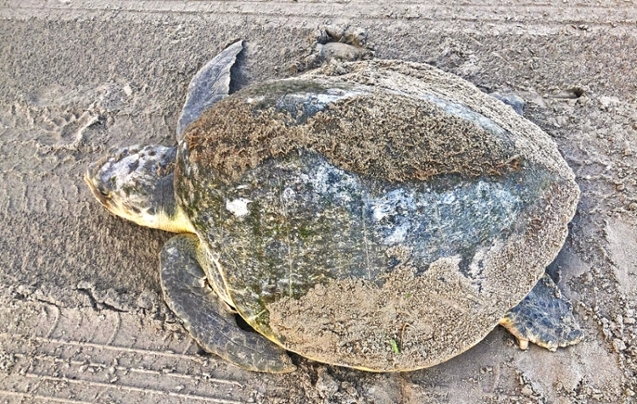Texas A&M-Galveston to Open On-Campus Sea Turtle Hospital
September 18, 2020
Tweet
By Andréa Bolt, Communications Specialist, Division of Marketing & Communications
Due to the closing of the National Oceanic and Atmospheric Administration (NOAA) Fisheries longtime Galveston Laboratory sea turtle facility, the GCSTR has taken the lead for responding to stranded sea turtles on the upper Texas coast and will use the hospital to provide rehabilitation services to stranded, ill or injured sea turtles.
Construction is currently underway. A wetlands facility on campus is being retrofitted to act as the hospital location and will house a number of industrial turtle-sized tubs, along with the necessary water filtration and filling equipment. The room holding the animals will be kept at 85 degrees in order to facilitate the optimum environment to best help the cold-blooded reptiles rest and recuperate for as long as they need. In addition, the hospital anticipates being able to accommodate limited public visits.
Texas A&M-Galveston will be partnering with the Houston Zoo on rehabilitation efforts and veterinary needs for the hospital’s patients.
“Plans are in place to build a long-term educational outreach facility and state-of-the-art sea turtle hospital on campus in the next several years. This facility will provide the public and school groups opportunities to see sea turtles from the local region and learn about the marine habitats of Galveston Bay, the upper Texas coast and the western Gulf of Mexico that support sea turtles,” said Department of Marine Biology Professor and GCSTR Director Dr. Christopher Marshall.
This facility will be the new home of the GCSTR and is a partnership with the National Park Service – Padre Island National Seashore, U.S. Fish and Wildlife Service, Texas Parks and Wildlife Department and the Galveston Bay Area Chapter of the Texas Master Naturalists.
The funding making this possible is part of the Deepwater Horizon Natural Resource Damage Assessment settlement received from the Texas Trustees, which include the Texas Parks Wildlife Department, the Texas Commission on Environmental Quality and the Texas General Land Office.
The GCSTR is dedicated to researching the endangered sea turtle species endemic to the Gulf of Mexico, including the critically-endangered Kemp’s ridley. Currently, the center helps run the local sea turtle stranding network and nesting-season turtle patrols.
###
Media contact:Communications Specialist
a_bolt@tamug.edu
More:
Read more about Arts & Humanities
Read more about Business, Law & Society
Read more about Health & Environment
Read more about Science & Technology
Read more about Liberal Studies
Read more about Marine Biology
Read more about Marine Sciences